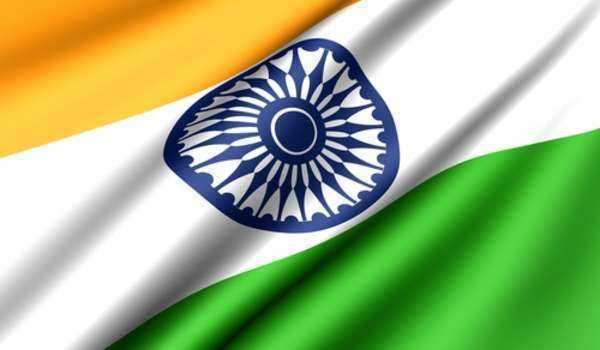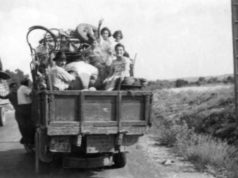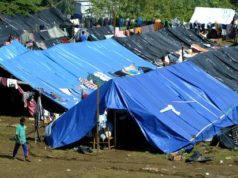
How India was Partitioned: A Historical Perspective
The partition of India was one of the most defining events in the history of the Indian subcontinent. It was the division of British India into two separate nations, India and Pakistan, that occurred on August 14-15, 1947. The partition led to mass migration, communal violence, and the largest transfer of population in human history. In this article, we will delve into the intricate details of how India was partitioned and the reasons behind it.
Background: The British Raj in India
The British presence in India started in the 17th century with the establishment of the East India Company. In 1858, after the Indian Rebellion of 1857, the British Crown took over direct control of India, which became known as the British Raj. The British Raj lasted until India gained independence in 1947. During this period, the British introduced various reforms and policies that had a lasting impact on Indian society, such as the introduction of English education, the Indian Civil Service, and the establishment of railways and telegraph networks.
The Rise of Indian Nationalism
The British rule in India was often characterized by economic exploitation, political suppression, and cultural domination. These factors led to the rise of Indian nationalism and various movements for independence from British rule. The Indian National Congress, founded in 1885, was one such movement that sought to achieve independence through peaceful means. Other nationalist leaders like Bal Gangadhar Tilak and Bhagat Singh advocated more militant means of resistance.
The demand for a separate Muslim state also emerged during this period. The All India Muslim League, founded in 1906, argued that Muslims were a distinct community with a different culture and political aspirations from Hindus and other communities in India. The League demanded a separate Muslim state in the northwestern and eastern regions of India.
The Idea of Partition
The idea of partitioning India along religious lines was first proposed by the British during World War II. The British administration believed that the Muslim League’s demand for a separate Muslim state would help them to maintain control over the Indian subcontinent, as the League was seen as a loyal ally of the British Empire. The British Viceroy Lord Wavell proposed the idea of a “”Pakistan”” (meaning “”land of the pure””) consisting of Muslim-majority provinces in the northwest and northeast of India. However, this proposal was rejected by the Indian National Congress and the Muslim League.
The Mountbatten Plan
The final plan for partition was proposed by Lord Mountbatten, the last British Viceroy of India. In June 1947, Mountbatten presented a plan that envisaged the creation of two dominions, India and Pakistan, with separate territories for Muslims and non-Muslims. The final plan was based on the principle of “”majority vs. minority,”” where areas with a Muslim majority would be part of Pakistan, and areas with a Hindu majority would be part of India.
The partition was scheduled to take effect on the midnight of August 14-15, 1947. The Indian Independence Act, passed by the British Parliament, provided for the creation of two independent nations, India and Pakistan, and the transfer of power to their respective governments.
The Borders of India and Pakistan
The partition of India led to the division of British India into two separate nations, India and Pakistan. India became a secular democracy, while Pakistan adopted Islam as its state religion. The partition also led to the formation of two wings of Pakistan, East Pakistan (later Bangladesh) and West Pakistan (now Pakistan).
The borders between India and Pakistan were drawn using the Radcliffe Line, named after Sir Cyril Radcliffe, the British lawyer who was tasked with the responsibility of drawing the boundaries. The Radcliffe Line divided the Indian subcontinent into two parts, with Pakistan on one side and India on the other. The line was drawn hastily, without taking into account the social, economic, and cultural ties that existed between different communities in the region. As a result, the partition led to the displacement of millions of people, communal violence, and the loss of property and lives.
The Communal Violence
The partition of India led to one of the deadliest communal riots in human history. The violence began on August 14-15, 1947, when India and Pakistan became independent. It continued for months, resulting in the loss of up to two million lives and the displacement of over 14 million people.
Political divisions rarely occur in a very clean way. When land is reorganized into new territories, and new countries formed out of large blocs, the logistical concerns of getting people from place to place are very real, and potentially destructive.
After the collapse of the Soviet Union, for example, the republics that were once so closely guarded by a Communist military presence became autonomous entities. In the wake of the change, people who were formerly constituents of the USSR at least temporarily became refugeesPrior to the Partition of India, Hindus and Muslims in India inhabited the same space in the form of one colony under the rule of the British crown.
Therefore, prior to the campaign for a separate Muslim state, factions within India were already seeking liberation from imperial dominion. While early on, as is understandable, objection to British authority manifested itself in the form of militant opposition, the independence movement later came to be defined by the doctrine of non-violence preached by and symbolized by Mohandas Gandhi.
It took much time for those in power to accede to any change, but eventually, India was awarded its sovereignty through the Indian Independence Act of 1947. However, contained within this decree as well was a plan for the partition of India, which would create the two independent states of India and Pakistan.
The end of the Indian independence movement would prove to be rather bittersweet. Of course, the gain of independence was a blessing for those who had long sought this dream. However, the partition of India was not something that all Indians supported; Gandhi, for one, objected to the division of the territory between India and Pakistan because it ran contrary to the unity his methods had stressed.
Nonetheless, that is exactly what happened. The official partition of India went into effect between August 14 and August 15 of 1947. The latter date was reserved for the establishment of India, and Pakistan thus commemorates August 14 as its independence date. Unfortunately, though, the huge population transfers of Hindus and Sikhs to India and Muslims to Pakistan created a refugee problem.
The Partition of India was directly responsible for the creation of over 10 million refugees. What’s more, in the haphazard as well as rushed migration between India and Pakistan, many lives were lost. All told, estimates from the religious clashes that erupted in the translation across borders approached one million persons lost.





















